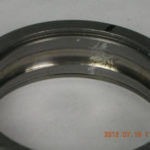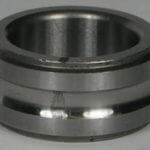Fault Data Sets
Condition Based Maintenance Fault Database
for Testing of Diagnostic and Prognostics Algorithms
Data Assembled and Prepared on behalf of MFPT
by Dr Eric Bechhoefer, Chief Engineer, NRG Systems
Introduction
The Condition Based Maintenance paradigm can both improve reliability while decreasing the cost of maintenance. This is achieved by reducing unscheduled maintenance events, and once validated, moving from periodic/scheduled maintenance to “on condition” maintenance. That said, the penetration of CBM into the general market (both commercial and military) is low.
One aspect of the low market penetration is that CBM technology is not a mature market. There is significant room for improvement in algorithms and techniques for reporting and displaying the condition of a component. Further, there are relatively few data sets where there is a known fault to prove or quantify the performance on new algorithms.
The goal of the Condition Based Maintenance Fault Database is to provide various data sets of known good and faulted conditions for both bearings and gears. This dataset is hereby freely distributed with example processing code with the hope that researchers and CBM practitioners will improve upon the techniques, and consequently, mature CBM systems, faster.
Bearing Fault Dataset
A bearing fault dataset has been provided to facilitate research into bearing analysis. The dataset comprises data from a bearing test rig (nominal bearing data, an outer race fault at various loads, and inner race fault and various loads), and three real-world faults.


Inner Race
The test rig was equipped with a NICE bearing with the following parameters:
- Roller diameter: rd = 0.235
- Pitch diameter: pd = 1.245
- Number of elements: ne = 8
- Contact angle: ca = 0
The data set1,2 comprises the following, and can be downloaded as a zip file package he:Fault Data Sets
- 3 baseline conditions: 270 lbs of load, input shaft rate of 25 Hz, sample rate of 97,656 sps, for 6 seconds
- 3 outer race fault conditions: 270 lbs of load, input shaft rate of 25 Hz, sample rate of 97,656 sps for 6 seconds
- 7 outer race fault conditions: 25, 50, 100, 150, 200, 250 and 300 lbs of load, input shaft rate 25 Hz, sample rate of 48,828 sps for 3 seconds (bearing resonance was found be less than 20 kHz)
- 7 inner race fault conditions: 0, 50, 100, 150, 200, 250 and 300 lbs of load, input shaft rate of 25 Hz, sample rate of 48,828 sps for 3 seconds
- 5 data analysis (.m) files that relate to Eric Bechhoefer’s introductory paper referred to below
- Three2 real world example files are also included: an intermediate shaft bearing from a wind turbine (data structure holds bearing rates and shaft rate), an oil pump shaft bearing from a wind turbine, and a real world planet bearing fault).
[Note1: The data is stored in a Matlab® double-precision, binary format *.mat file. The data structure holds the load, shaft rate, sample rate and a vector of “g” data.
Note2: The initial data uploaded to the website in October 2012 included errors, in that the sample rate was defined as 50 Hz, when in fact it was 25 Hz. New data sets correcting this error were uploaded on 27 Feb 13. In addition, a third real world example was added]
MATLAB, or the freely distributed software package GNU Octave, can be used to read and manipulate these files.
Data Analysis
You may analyze the data using your own algorithms, but Dr Eric Bechhoefer has provided “A Quick Introduction to Bearing Envelope Analysis” which may be useful and can be downloaded here.